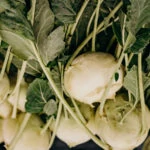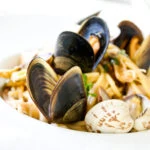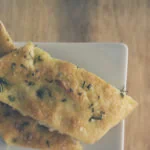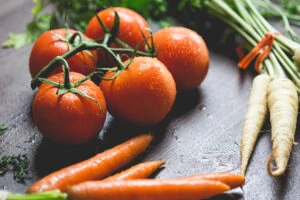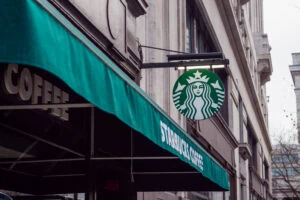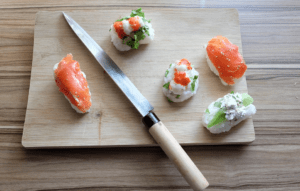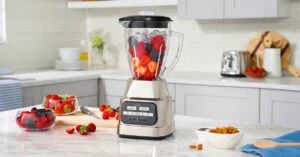Juicing at home means using either a Cold Press Juicer vs Normal Juicer. These two types of juicers are the best residential juicers for juicing at home. So, what’s the difference between these two best juicer types? That’s what we’ll answer today.
We’ll help you understand the many differences between these two juicers so that you know which juicer is best for you.
What Is a Cold Press Juicer?
A cold press juicer is also known as a masticating juicer or an auger juicer. It is a juicer that gets its name from its method to extract juice from fruits and vegetables.
A cold press juicer slowly crushes the fruits and vegetables placed within it to extract all of the juice from the pulp. A cold press juicer is also called a slow juicer because of how long this process can take.
It can be time-consuming to slowly extract the cold pressed juice from the pulp, but what you’re left with is nutrient-rich pressed juice, making cold press juicing a highly beneficial method to use.
What Are the Benefits of Cold Press Juicing?
When juice is slowly extracted from the pulp of fruits and vegetables, it lowers the oxidation of the juice. This gives you a more nutritious juice and better juice quality.
Oxidation occurs when the inside of cut fruits or vegetables come in contact with oxygen. Oxidation causes fruits and vegetables to lose their flavor, turn brown, and begin to spoil. The higher the oxidation percentage, the faster the juice will deteriorate and the quicker it will need to be consumed.
Cold press juicers produce juice that has very minimal oxidation, typically around 5% or less. This means you get the most nutrients from the cold pressed juice and you don’t have to drink it immediately. You can seal it and store it in the refrigerator for up to 72 hours without it losing much flavor or nutrients.
What Types of Fruits and Vegetables Can You Use in a Cold Press Juicer?
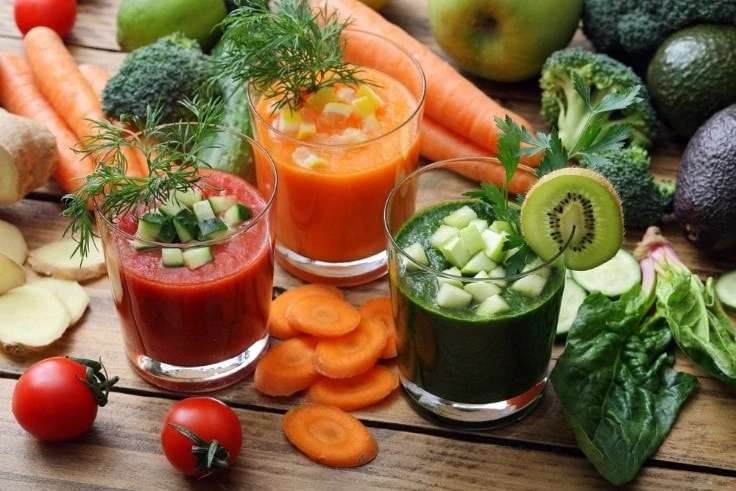
A cold press juicer works best with softer fruits and vegetables and leafy greens like kale, spinach, and celery. The auger of a cold press juicer slowly crushes the fruits and vegetables, so it uses very little heat and energy.
Because it doesn’t use a powerful motor, a cold press juicer may not be the best for harder fruits and vegetables simply because of how long it will take for the juicer to crush them to extract the juice.
That’s not to say that a cold press juicer can’t be used to juice hard fruits and vegetables; it just means that it can take a longer time to juice harder fruits and vegetables with a cold press juicer than with a normal juicer.
The one thing that you likely won’t be able to do with a cold press juicer is placing whole fruits and vegetables, like a whole apple, for example, into the chute of the cold press juicer. Cold press juicers have small chutes and often don’t accommodate the size of whole fruits and vegetables.
You will have to cut whole fruits and vegetables into smaller pieces to make them fit in the chute of the juicer. This prep time can add to the already time-consuming process that the cold press juicer requires. So, if time is of the essence for you, a cold press juicer may not be your best choice.
What Is a Normal Juicer?
A normal juicer is also known as a centrifugal juicer because it uses centrifugal force to extract the juice from the pulp. This is the traditional juicing method, and many of the juicers we included in our ultimate guide to juicing are centrifugal or normal juicers.
With a normal juicer, a motor causes a blade to spin at a high rate of speed to cut the fruit and separate the pulp. The centrifugal juice is then extracted from the pulp because of how forceful and how fast the pulp is spinning through the juicer.
A normal juicer can produce juice in just a matter of minutes, especially when the juicer has a large chute that whole fruits and vegetables can fit through without being cut into smaller pieces.
Some normal juicers can have more than one speed, giving you the option to juice softer fruits and vegetables at slower speeds and harder fruits and vegetables at higher speeds. A normal juicer will be your best choice if you’re new to juicing. They are easy to assemble, easy to use, and produce fool-proof fresh juice every time.
Are There Any Downsides to Using a Normal Juicer?
Because a normal juicer or centrifugal juicer uses a powerful motor to spin the blade at such high rates of speed, it uses a lot of energy. There can be a couple of different downsides to this.
First, it can make juicing loud, which may be something you want to try to avoid in the early morning hours when everyone else is sleeping. However, if it’s just you or if you juice during another time of the day, this may not be a concern to you.
Another downside is that the speed of the blade can oxidize your juice significantly faster than when using a masticating juicer. This means that your juice will begin to lose flavor immediately and begin to spoil once it’s extracted, so you’ll need to drink it immediately after juicing.
If you choose to store your fresh juice for 24 or 48 hours in the refrigerator, it will likely turn brown and begin to separate during this time which can be both an unpleasant taste and an unpleasant texture when drinking.
For this reason, it is best to drink the fresh juice from a normal juicer immediately after its produced.
What Types of Fruits and Vegetables Be Used in a Normal Juicer?
You can use both hard and soft fresh fruits and vegetables in a normal juicer. We recommend choosing a centrifugal juicer with more than one speed setting, such as a low speed or a slow speed for softer fruits and vegetables like citrus and tomatoes, and a high speed for harder fruits and vegetables like carrots and sweet potatoes.
Essentially, you can use fruits and vegetables of all shapes and sizes in a normal juicer. Just make sure you prepare them correctly.
You’ll need to remove the peel from any citrus fruit you’re juicing, and always make sure to remove the pits from fruits like peaches and apricots.
One of the best features of a normal juicer is the large chute that can accommodate whole fruits without requiring them to be cut into smaller pieces. Whole fruits like apples and pears can be placed directly into the chute, and the juicer will easily chop them up and extract the juice.
FAQ
Can a cold pressed juicer be washed in a dishwasher?
Not all of the parts of a cold pressed juicer are dishwasher-safe. You should only place the dishwasher-safe parts in the dishwasher to be cleaned, and you should hand wash the parts that aren’t dishwasher-safe.
Why is it called a cold press juicer?
A masticating juicer or an auger juicer is called a cold press juicer because of the very little heat the juicer uses to crush the fruits and vegetables to extract the juice. Heat is produced when a motor spins the blade in a normal juicer.
Since a cold press juicer doesn’t use a spinning blade to chop the fruits and vegetables, it doesn’t create heat the way a normal juicer does. Instead, it slowly presses the fruits and vegetables to create the pulp and extract the juice.
Does a cold press juicer work better than a normal juicer?
The answer depends on what you’re juicing and what your goal is.
If you’re in a hurry or don’t have a lot of time to dedicate to preparing fruits and vegetables to fit into the chute of the cold press juicer, then you may think a normal juicer will work better than a normal juicer.
At the same time, if you have plenty of time to prepare fruits and vegetables for slow juicing, then you may think a cold press juicer will work better than a normal juicer. It all depends on the type of juicing you’ll be doing and how much time you have to dedicate to it.
Both juicers produce quality juice that will be flavorful and nutritional, with the juice of a cold press juicer likely having more nutrients than the juice from a normal juicer.
Conclusion
Cold press juicers and normal juicers are both great for juicing at home. While a cold press juicer will require more prep time and operational time for juice extraction, it will also produce flavorful juice full of high nutritional value. A normal juicer is quick and easy to use and is a great way to get nutrition from fruits and vegetables.
As far as which one you should choose? You’ll have to think about how much time you can dedicate to juicing and what types of fruits and vegetables you’ll be juicing the most. This will help you decide which juicer is best for you.


